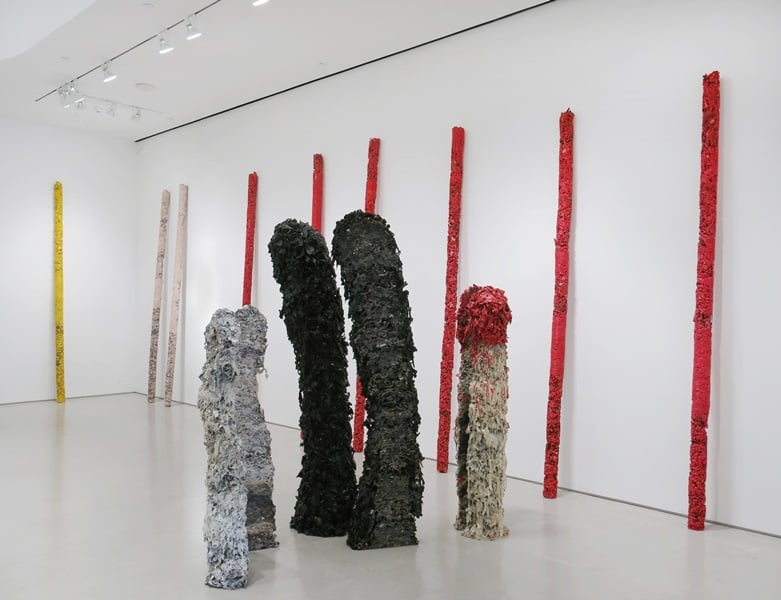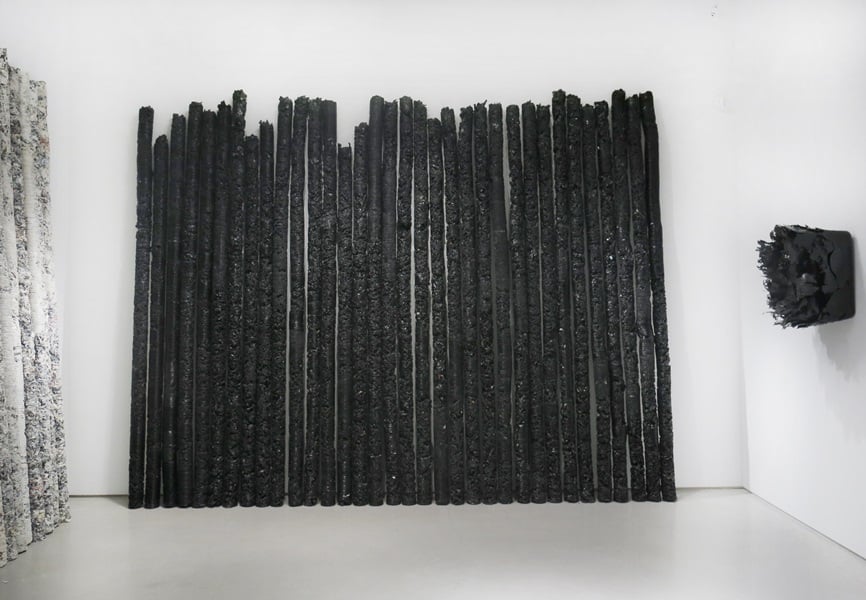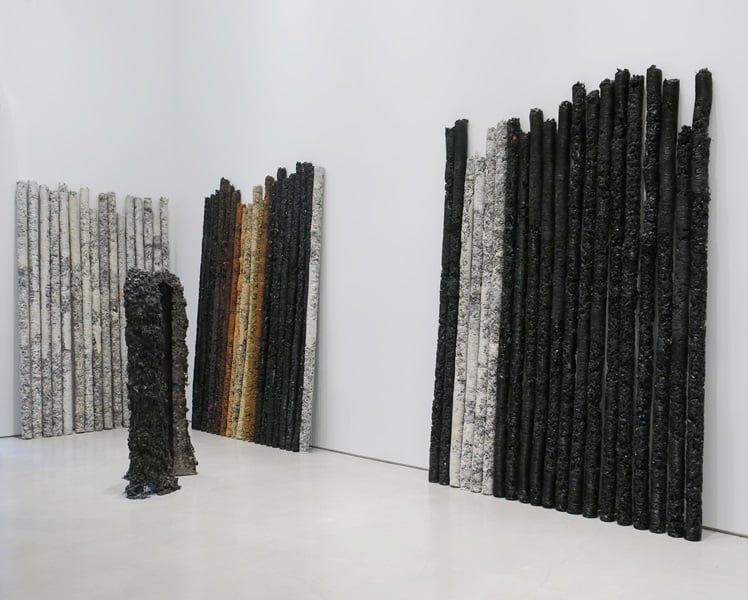Art & Exhibitions
Helmut Lang Sheds (and Shreds) His Former Identity
With a show at Sperone Westwater, the former fashion star might be the new It artist.

With a show at Sperone Westwater, the former fashion star might be the new It artist.

Cait Munro

In 2005, Helmut Lang, a designer lauded for his minimalist, expertly draped silhouettes, called it quits on the fashion world. He’s still a household name in the industry, thanks in part to the eponymous label that lives on despite his separation from it. But for the past decade, he’s been doing something equally creative, a bit more solitary, and apparently a lot more fun: making art. Aged 58, Lang can be called one of the oldest emerging artists in the game.
Perhaps you remember his highly publicized summer 2011 show at the Fireplace Project in East Hampton. Jaws hit the floor (and, somewhere in the distance, a zillion fashion girls screamed) when it was revealed he had shredded over 6,000 garments from his personal archive to create the towering pillars on display.
Last year, he joined the stable of Sperone Westwater, where his first Manhattan solo show will open on January 8, showcasing some of the same pieces from the 2011 exhibition along with several new works.
After showing at the Journal Gallery in Brooklyn in 2007, at kestnergesellschaft Gallery in Hanover, Germany the following year, and at the aforementioned East Hampton show, Lang met Angela Westwater through a mutual friend. “She believed in me and my artwork,” Lang explained. “I’m very honored to be part of the gallery.” Westwater told the Wall Street Journal, “The first time I went [to Lang’s studio], I was totally blown away….When you approach [the sculptures], they have an intimacy. They’re highly physical, very tactile, very mysterious as to their composition.”

Helmut Lang, installation view.
Photo courtesy Sperone Westwater
Lang’s new sculptures once again employ repurposed garments from his archive along with raw pigments and resin. And once again, the viewer is confronted with the death of Lang’s former identity and his rebirth as a new kind of creator. On the subject he simply says: “I was very serious about art, and I didn’t want to be the goalkeeper of my former legacy. So they had to go.”
It’s tempting to get caught up on the origins of the materials when looking at Lang’s work, perhaps just because it’s such a sexy story that lends itself well to the link we want to make between his past and his present. But he cautions against this, quoting his friend, the late Louise Bourgeois: “A famous quote, which she once told me, is that ‘Materials are just materials. They are here to serve you.'”
At a time when it feels like every big artist is secretly interested in being a designer (or at least collaborating with one on a splashy campaign), Lang’s desire to go in the other direction and subsequent success in doing so feels like a win for the people who want to make “art for art’s sake,” rather than just take home a big paycheck. After all, unless you’re a Jeff Koons or a Damien Hirst, it’s unlikely that a career in the visual arts will be as lucrative as, say, running a multimillion dollar fashion label.

Helmut Lang, installation view.
Photo courtesy Sperone Westwater
But long before he ditched his high-fashion roots, Lang had both enviable connections and a protracted interest in the art scene, dating back to his years as a student in his native Vienna. When he was 18, he became close friends with the painter Kurt Kocherscheidt, whom he credits with influencing his studio practice today. From there, he met Martin Kippenberger and Franz West. Initially hoping to study art, he stumbled into fashion in his early 20s after hiring a seamstress to bring to life a few things he had designed for himself. Soon, friends were clamoring for pieces of their own; things quickly bloomed from there. Lang’s first fashion presentation in 1986 took place at the Pompidou Centre in Paris.
In the mid-1990s, he developed lasting friendships with Bourgeois and Jenny Holzer, both of whom he collaborated with on various art and fashion ventures. During the same period, he used Robert Mapplethorpe’s photographs in his advertisements. In a weird way, he helped usher in the art-fashion mash-ups so ubiquitous today. If it looks like his transition into art is a rejection of the very interdisciplinary collaborations he (perhaps unwittingly) invented, it’s not on purpose. It’s really more the completion of a circle, bringing him back to where he initially intended to be.
“I always felt that Helmut wasn’t really in the fashion world—he was in his own world,” photographer and friend Bruce Weber told W Magazine in 2008.
Sculptures by Helmut Lang will be on display at Sperone Westwater from January 8–February 21. For a sneak peak, check out @speronewestwater on Instagram!